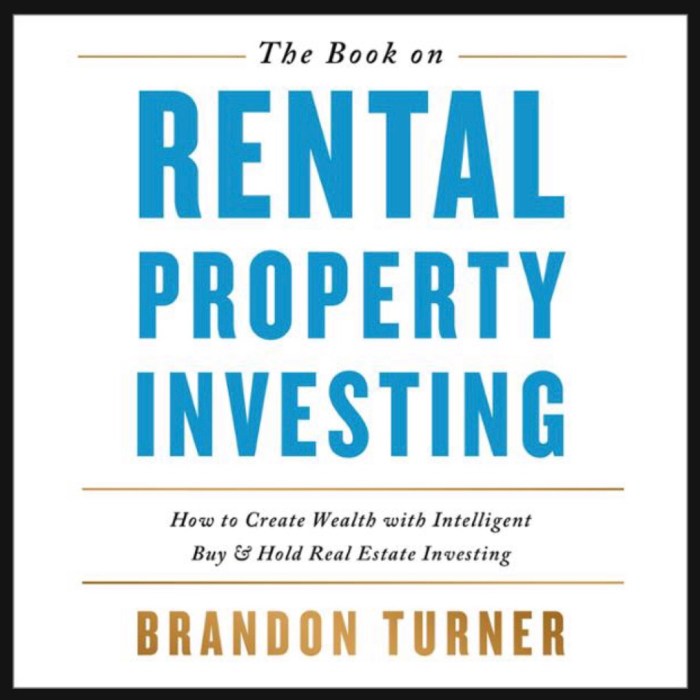Purchasing a House to Rent Out A Comprehensive Guide
Market Research & Property Selection
Purchasing a house to rent out – Thorough market research is crucial for successful rental property investment. This involves identifying promising markets, analyzing property types, and assessing potential returns. A well-structured approach minimizes risks and maximizes profitability.
Potential Rental Markets
Three potential markets with varying price points are considered: a suburban area with established families (mid-range), an urban downtown location near employment hubs (high-range), and a college town near a university (budget-friendly). Each offers distinct demographic profiles and investment opportunities.
- Suburban Market (Mid-Range): This market typically features families with children, seeking larger homes with yards. Rental demand is stable, with vacancy rates averaging around 5%. Population demographics show a growing family-oriented population with stable income levels.
- Urban Downtown Market (High-Range): Young professionals and affluent individuals comprise the primary renters in this market. High rental demand exists due to proximity to jobs and amenities. Vacancy rates are typically lower (around 3%), but property prices are significantly higher.
- College Town Market (Budget-Friendly): Students and young professionals form the core renter base. High demand exists during the academic year, but vacancy rates can increase during summer breaks (potentially reaching 10%). Rental rates are generally lower, aligning with student budgets.
Single-Family vs. Multi-Family ROI
Comparing the ROI of a single-family home versus a multi-family unit in the suburban market provides a valuable case study. Assumptions include a 20% down payment, a 5% annual appreciation rate, and a 5% vacancy rate.
Single-Family Home: Purchase price: $300,000; Rental income: $2,000/month; Expenses (mortgage, taxes, insurance, maintenance): $1,500/month. Annual net income: $6,000. ROI calculation requires considering the initial investment, annual net income, and property appreciation. A detailed calculation would show the approximate annual ROI percentage.
Multi-Family Unit (Duplex): Purchase price: $450,000; Rental income (two units): $2,500/month each; Expenses (mortgage, taxes, insurance, maintenance): $3,000/month. Annual net income: $18,000. Similar to the single-family home, a comprehensive ROI calculation would be needed to determine the percentage.
While the multi-family unit has a higher initial investment, its potential for higher rental income and cash flow leads to a potentially greater overall ROI. However, the management complexities are also increased.
Property Feature Comparison
| Address | Size (sq ft) | Amenities | Estimated Monthly Rent |
|---|---|---|---|
| 123 Main St | 1500 | 2 bedrooms, 1 bath, garage | $1800 |
| 456 Oak Ave | 2000 | 3 bedrooms, 2 baths, fenced yard | $2200 |
| 789 Pine Ln | 1200 | 2 bedrooms, 1 bath, updated kitchen | $1600 |
| 101 Maple Dr | 1800 | 3 bedrooms, 2 baths, finished basement | $2000 |
| 222 Birch Rd | 1400 | 2 bedrooms, 1 bath, central AC | $1700 |
Investment Risks

Source: millennialmoneyman.com
Investing in rental properties carries inherent risks. Understanding these risks is vital for effective mitigation strategies.
- Vacancy Risk: Periods of vacancy lead to lost rental income. Strategies such as competitive rental rates and effective tenant screening help mitigate this risk.
- Property Damage Risk: Unexpected repairs and maintenance can significantly impact profitability. Regular inspections and a robust maintenance plan are essential.
- Market Fluctuations Risk: Changes in market conditions, such as interest rate hikes or economic downturns, can influence property values and rental demand. Diversification and a long-term investment horizon can help.
Financial Planning & Financing
A comprehensive financial plan is crucial for securing financing and managing the financial aspects of rental property investment. Careful budgeting and strategic financing choices are key to success.
Rental Property Budget
A detailed budget should encompass all anticipated costs. This includes the down payment, closing costs (legal fees, appraisal, title insurance), property taxes, homeowner’s insurance, ongoing maintenance (repairs, landscaping), and potential vacancy periods.
Example: For a $300,000 property with a 20% down payment, initial costs might include $60,000 (down payment), $5,000 (closing costs), and an additional $2,000 for initial repairs. Ongoing monthly expenses might average $1,500 (mortgage, taxes, insurance, maintenance).
Financing Options
- Conventional Loan: Typically requires a higher credit score and a larger down payment (often 20%). Offers competitive interest rates and flexible loan terms.
- FHA Loan: Requires a lower credit score and a smaller down payment (as low as 3.5%). Offers more lenient qualification criteria but may have higher mortgage insurance premiums.
- Private Money Loan: Secured from private investors or hard money lenders. Often offers faster funding but typically comes with higher interest rates and stricter terms.
Loan Term Implications
Interest rates and amortization periods significantly impact profitability. A longer amortization period lowers monthly payments but increases total interest paid over the loan’s life. Conversely, a shorter period increases monthly payments but reduces overall interest costs. The optimal choice depends on the investor’s financial situation and risk tolerance.
Example: A $300,000 loan at 5% interest over 30 years results in significantly lower monthly payments compared to a 15-year loan, but the total interest paid will be substantially higher.
Additional Funding Sources
- Home equity loans or lines of credit (HELOCs).
- Refinancing existing mortgages.
- Private investors or hard money lenders.
Legal & Regulatory Considerations
Navigating the legal landscape of rental property ownership is essential for compliance and protecting your investment. Understanding tenant rights, landlord-tenant laws, and permit requirements is crucial.
Key Legal Aspects
- Tenant Rights: Laws vary by location but generally protect tenants from discrimination, unwarranted entry, and unlawful eviction. Landlords must adhere to fair housing laws and provide a habitable dwelling.
- Landlord-Tenant Laws: These laws govern lease agreements, rent collection, security deposits, and eviction procedures. Familiarizing yourself with these laws is critical.
- Property Tax Regulations: Understanding property tax assessments and payment schedules is vital for budgeting and compliance. Delinquencies can lead to penalties and even foreclosure.
Permits and Licenses
Obtaining the necessary permits and licenses for renting a property involves contacting the local government agencies responsible for issuing rental licenses and business permits. This process typically includes submitting an application, paying fees, and potentially undergoing inspections.
Lease Agreement Options
Different lease agreements exist, each with advantages and disadvantages. A standard lease agreement Artikels terms like rent amount, payment schedule, lease duration, tenant responsibilities, and landlord responsibilities. Choosing the right agreement protects both the landlord and tenant.
A critical clause should specify the process for rent increases, ensuring compliance with local regulations.
Another crucial clause should clearly define the responsibilities of both parties regarding property maintenance and repairs.
Handling Tenant Disputes and Evictions
Tenant disputes are best addressed through communication and mediation. If disputes escalate, legal channels, such as small claims court or formal eviction proceedings, may be necessary. Following the legal process is vital to avoid legal repercussions.
Property Management & Maintenance
Effective property management and regular maintenance are crucial for maximizing rental income and preserving the property’s value. This involves tenant screening, rent collection, and proactive maintenance strategies.
Property Management Plan
A comprehensive plan should Artikel strategies for tenant screening (credit checks, background checks, rental history verification), rent collection (online payment systems, late fee policies), and routine property maintenance (inspections, repairs, landscaping).
Self-Management vs. Professional Management
Self-managing offers greater control and potentially lower costs, but requires significant time and expertise. Professional property management companies handle all aspects, but charge fees (typically 8-12% of monthly rent). A cost comparison should consider the time value of the landlord’s efforts versus the management fees.
Maintenance and Repair Costs
| Task | Frequency | Estimated Cost | Notes |
|---|---|---|---|
| Regular cleaning | Monthly | $100 | Can be done by tenant or cleaning service |
| HVAC maintenance | Annually | $200 | Preventative maintenance is crucial |
| Roof repair | As needed | $2000+ | Significant cost, insurance may cover |
| Plumbing repairs | As needed | $100+ | Can vary greatly depending on the issue |
Net Operating Income Calculation, Purchasing a house to rent out
Calculating net operating income (NOI) involves subtracting all operating expenses from the total rental income. Projecting NOI over a five-year period allows for a comprehensive assessment of profitability, taking into account potential rent increases, maintenance costs, and vacancy periods. This calculation provides a clearer picture of the investment’s financial performance.
Risk Mitigation & Long-Term Strategy: Purchasing A House To Rent Out
Proactive risk mitigation and a well-defined long-term strategy are crucial for protecting your investment and maximizing its long-term profitability. This includes identifying potential risks, developing mitigation strategies, and planning for long-term growth.
Potential Risks
- Vacancy Risk: Market conditions and tenant turnover can lead to periods of vacancy, resulting in lost rental income. Strategies include competitive pricing, thorough tenant screening, and proactive marketing.
- Property Damage Risk: Unexpected repairs, from minor issues to major damage, can significantly impact profitability. Regular inspections, preventative maintenance, and insurance coverage are essential.
- Market Condition Risk: Economic downturns, interest rate changes, and local market shifts can affect property values and rental demand. Diversification and a long-term perspective help mitigate this.
Risk Mitigation Plan
A risk mitigation plan should Artikel specific strategies to address potential issues. This includes maintaining a reserve fund for unexpected repairs, securing appropriate insurance coverage, and implementing a robust tenant screening process. Regular property inspections help identify and address potential problems early.
Long-Term Profitability Strategies
- Property Improvements: Upgrades can attract higher-paying tenants and increase the property’s value. Examples include kitchen or bathroom renovations, energy-efficient upgrades, or landscaping improvements.
- Rent Increases: Periodic rent adjustments, in line with market rates, increase rental income. Compliance with local rent control laws is crucial.
- Refinancing: Refinancing the mortgage at a lower interest rate can reduce monthly payments and free up cash flow.
Worst-Case Scenario

Source: wordpress.com
A worst-case scenario might involve a prolonged vacancy combined with significant property damage. Financial reserves, insurance coverage, and potentially additional funding sources (family, friends, or lenders) would be necessary to address such a situation. Legal counsel might be needed to navigate tenant issues or insurance claims.
Essential Questionnaire
What are the typical closing costs when purchasing a rental property?
Closing costs vary but typically include appraisal fees, title insurance, loan origination fees, and recording fees. Expect to pay 2-5% of the purchase price.
How do I screen tenants effectively to minimize risks?
Conduct thorough background checks, including credit reports, criminal history checks, and rental history verification. Verify income and employment stability. Consider using a professional tenant screening service.
What are my responsibilities as a landlord regarding property repairs?
Your responsibilities depend on local laws, but generally, you’re obligated to maintain the property in habitable condition and address necessary repairs, except for those caused by tenant negligence.
What insurance coverage do I need for a rental property?
Landlord insurance, which typically includes liability coverage and property damage protection, is crucial. Consider additional coverage for loss of rental income due to unforeseen circumstances.




















